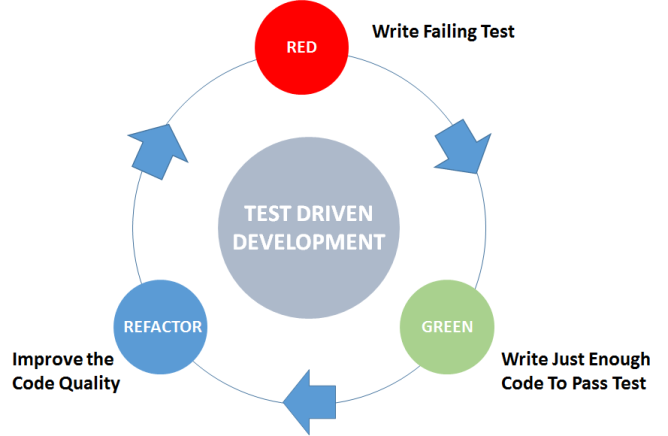
Adopting a modern approach to software development with TDD yields tangible business outcomes. Following an agile approach, the entire software development lifecycle is broken down into small iterations in order to minimize the overall risk involved in carrying out a project.
The Business Need - Why Daffodil adopts TDD to ensure delivery of Quality Software to its clients
Daffodil's customer driven approach has helped numerous clients enhance their business portfolio. We practice Test Driven Development methodology to boost the quality of the software components of our system.
A Brief Background
Recently our cross-functional software development team was collaboratively working on the development of a business application of a major enterprise client in the healthcare industry. Since we already knew that the traditional testing methodology is prone to long regression testing cycles and a high defect density, we adopted TDD approach right from the start of the project.
Though it is a normal practice to change the logic & db schema even during the software development lifecycle, it always requires a lot of time to test each and every feature in depth when done manually. TDD ensures frequent changes do not introduce regression issues while also maintaining the quality of the final deliverable product.
This project too involved such changes during development cycle but we didn't let the cost and quality of software compromise due to TDD.
Daffodil's High-Impact TDD Approach
TDD is one of the best practices in software engineering practiced by development teams at Daffodil Software to write clean code while implementing a RED-GREEN-REFACTOR approach as shown in the above diagram.
What are the Business Advantages of TDD That Benefited Our Clients?
Now let's take a more detailed look at some of the core business advantages of TDD that our clients often acknowledge when they return to us with fresh projects.
1. TDD brought clarity to the software requirements
One advantage of TDD that our clients can't stop acknowledging again and again is - it brings thorough clarity to software requirements. Hence this approach is extremely beneficial both ways - for our own team and also for our clients.
2. Satisfied Stakeholders
Our business stakeholders were not only satisfied but also delighted as we delivered exactly what they asked for each iteration. We were highly appreciated for sailing smoothly throughout the whole project while implementing features that were otherwise too complex to automate.
3. A Great Investment for Future Use
Any project that is completed using TDD turns out to be a great investment for our client's business. We build software keeping in mind an agile approach to deliver clean code which is highly reliable, easily maintainable and extremely flexible to meet evolving business requirements.
4. High Quality Applications Delivered
The TDD procedure enables us to focus on each single component of the application. Automated testing procedures enable us to consistently measure the quality at every stage of SDLC. This continual investment in quality yields significant dividends at the overall system level.
The end product we deliver to our client is of comparatively higher quality as compared to others who use traditional development methodologies.
5. Enhanced Flexibility for Extended Requirements
TDD enabled us to rapidly respond to a changing environment or unanticipated product updates. Implementing a solid TDD culture and a rich test base, we grabbed the chance to seize opportunities and beat business competitors in the market.
Adopting a TDD approach ultimately led to delivery of quality software making it a more valuable asset for our clients. Although there are numerous factors and other agile practices that account for successful project completion, some of the critical areas our development team focused on were - short iterations, continuous Integration and refactoring. With TDD, we were able to think, understand and capture business requirements beyond what the client could envision at the time of outsourcing the project to us.



